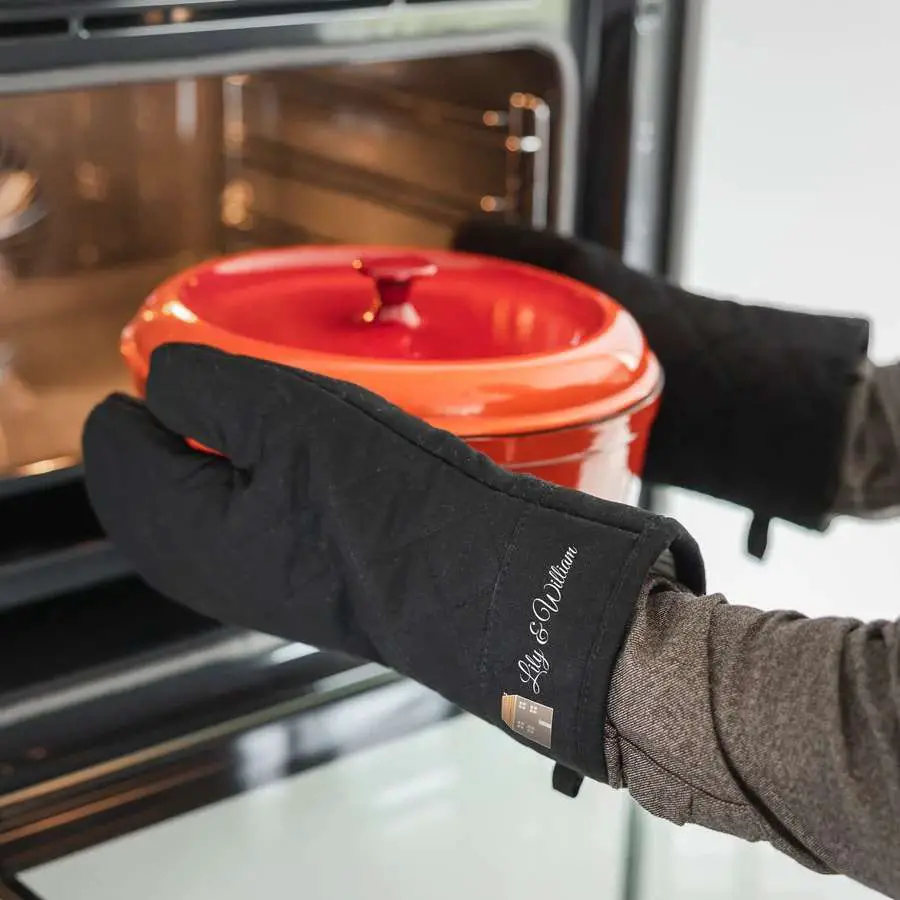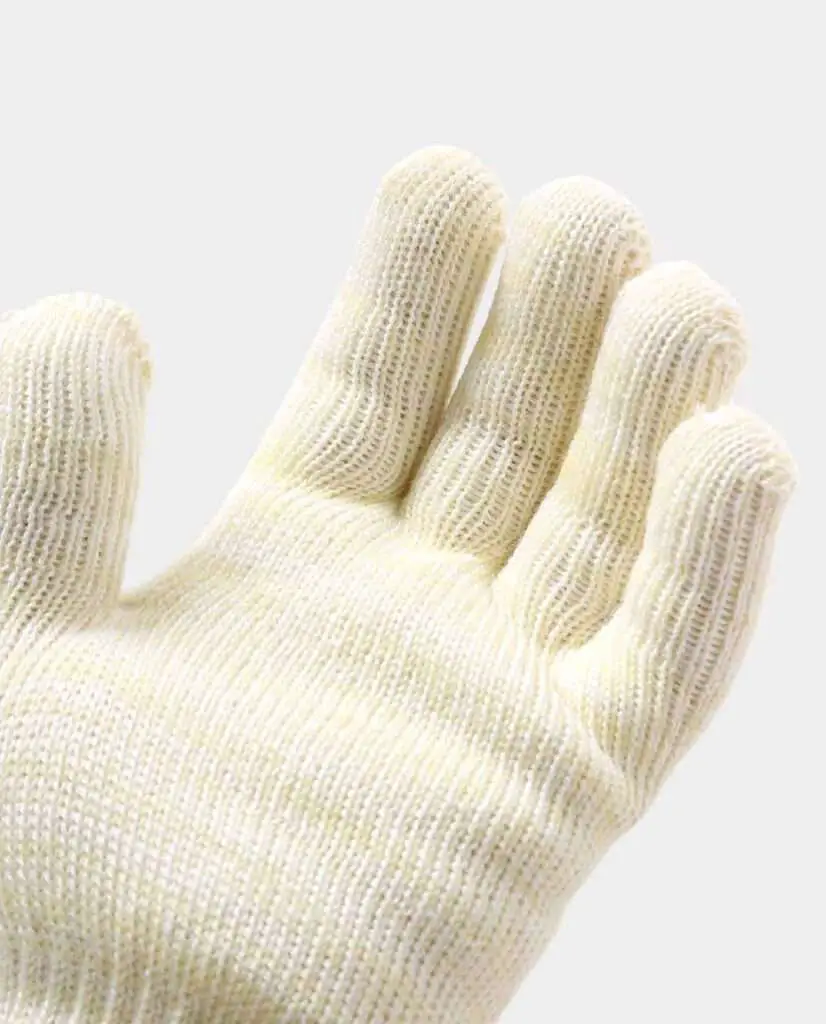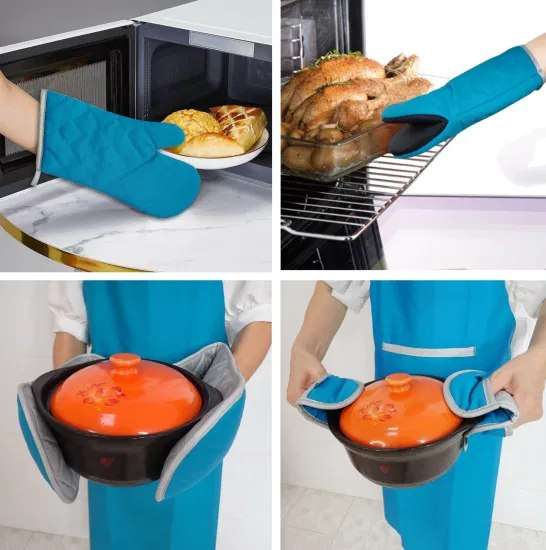Oven gloves are typically made out of heat-resistant materials like silicone or heavy cotton. These fabrics can withstand high temperatures, protecting your hands while cooking or baking.
What are oven gloves made of? Oven gloves serve as an essential kitchen accessory, designed to offer safety and convenience to home cooks and professional chefs alike. They safeguard your hands from the extreme heat of the oven, grills, and stovetops, enabling you to handle hot cookware confidently.
Made from materials that resist heat, oven gloves come in various styles, including mitts, gloves with fingers, and pot holders, providing flexibility and grip for different cooking tasks. By incorporating thermal insulation and sometimes silicone grips, these gloves combine functionality with safety to enhance your cooking experience without sacrificing dexterity. As kitchen safety becomes increasingly prioritized, choosing the right type of oven glove can make all the difference in your culinary ventures, preventing burns and accidents.
Unveiling The Material Mix: Exploring The Components Of Oven Gloves
Oven gloves are essential kitchen tools crafted from materials designed to withstand high heat. They typically combine cotton, silicone, and sometimes aramid fibers for maximum protection and flexibility.
Crafting the perfect oven glove involves a delicate balance of materials to ensure both comfort and protection. Each component has a specific role, whether it’s providing heat resistance, enhancing grip, or ensuring longevity.
The Heat-resistant Heavyweights: Fibers That Withstand High Temperatures
Let’s delve into the fibers that give oven gloves their superhero-like ability to battle against the heat:
- Aramid fibers: Known for their use in aerospace and military applications, these synthetic polymers offer exceptional heat resistance, not flinching until temperatures soar to around 500°F (260°C).
- Cotton: Often used as a comfortable lining, it’s responsible for making sure your hands stay cool and can handle the warmth while you juggle hot pans.
- Silicone: This elastomer brings to the table its non-slip qualities, making sure your culinary creations don’t slip away while offering moderate heat protection.
The Comfort Creators: Materials That Maximize Ease Of Use
Without sacrificing safety, comfort is a close second in priority. Here’s a peek at what keeps our hands happy:
- Neoprene: A type of synthetic rubber, it not only resists heat but also provides a cushy feel, ensuring your hands are snug within the gloves.
- Polyester: Often used as a binding agent, polyester enhances the structural integrity of the glove, making sure it retains its shape even after multiple uses.
By choosing the right blend of these materials, oven gloves achieve a harmonious balance between protection and comfort, making them an indispensable ally in any kitchen. With a sharp focus on quality components, they aim to outperform and outlast, all the while keeping your hands safe from the sizzle and sear of cooking.
The Fabric Puzzle: Understanding The Composition Of Oven Glove Materials
Discover the materials that comprise oven gloves, designed to shield hands from scorching heat. Explore the multifaceted construction of these kitchen essentials, combining textiles like silicone, cotton, and aramid fibers for ultimate protection and comfort.
Venturing into the kitchen, one of the essential tools a cook reaches for when handling hot dishes is the reliable oven glove. But what goes into these heat-resistant hand protectors? A closer look at their construction reveals a fascinating fabric puzzle, combining functionality with safety to help you handle the heat.
The Science Of Heat Resistance
Oven gloves are designed to be heat-resistant, which is a fundamental aspect of their function. Their ability to protect your hands from high temperatures boils down to the materials used in their construction:
- Insulating Fibers: Materials such as aramid (the same fiber used in firefighter suits) provide exceptional heat resistance.
- Cotton Comfort: Often paired with heat-resistant fibers, cotton adds a layer of comfort and additional heat absorbency.
- Silicone Grip: Some gloves feature silicone, which offers not only heat resistance but also improved grip on slick surfaces.
Each material plays a pivotal role in guarding against heat and ensuring the safe handling of hot items straight from the oven.

Textile Treatments And Blends
Not all oven gloves are made the same. Some boast special treatments and blends for heightened protection:
- Synthetic vs. Natural: Blends of synthetic materials tend to offer higher heat resistance, while natural fibers prioritize comfort.
- Aluminized Coatings: A reflective aluminized coating can be applied to the exterior fabric to reflect heat away from your hands.
- Layered Construction: The use of multiple layers can increase the glove’s heat resistance while maintaining flexibility.
By understanding the multitude of fabrics and treatments used, you can choose an oven glove that caters to the specific demands of your culinary adventures. Remember, the right glove can mean the difference between a delicious meal and a culinary mishap.
Choose wisely, and let your hands bask in the comfort and safety of well-crafted oven gloves.
From Heat Resistance To Comfort: Delving Into The Ingredients Of Oven Gloves
Oven gloves are crafted from durable materials like silicone, cotton, and Kevlar, offering both protection from high temperatures and user comfort. They combine safety with flexibility, ensuring a secure grip on hot dishes and bakeware.
Choosing the right oven gloves can be pivotal in ensuring kitchen safety and comfort. So, let’s pull back the curtain on what really goes into the crafting of these kitchen essentials.
The Building Blocks: Heat-resistant Materials
Oven gloves are not just any ordinary kitchen accessory; they are constructed from materials designed to withstand high temperatures. Here’s a look at the common fabrics and substances that lend oven gloves their heat-resistant superpowers:
- Silicone: This flexible, rubber-like material can resist heat up to 450 degrees Fahrenheit and offers a non-slip grip.
- Aramid Fibers: Often found in firefighter suits and military-grade applications, these synthetic fibers provide exceptional thermal resistance.
- Cotton Lining: Generally used as an inner layer, cotton offers comfort and additional heat resistance, though not as robust as outer materials.
Enhanced Comfort: The Soft Side Of Oven Mitts
Even though durability against high heat is a top priority, your hands deserve comfort too. Oven gloves provide this with soft interiors that cater to the hand’s curves. Gentle yet durable materials like cotton terry cloth and soft linings make wearing the gloves a cozy, snug experience, while also allowing for a firm grasp on hot items.
This thoughtful combination ensures that your kitchen endeavors remain as comfortable as they are safe.
Design Matters: Functionality And Style
A glove’s design is integral to its functionality. Here’s how the right design elements can enhance your cooking experience:
- Extra Length: Provides added protection for your forearms against splatters and heat when reaching into the oven.
- Cuff Design: Ensures the gloves stay secure on your hands, preventing slips during those crucial moments of handling hot bakeware.
- Pattern and Color: While not a functional aspect, aesthetic options allow personalization, making your oven gloves an extension of your style in the kitchen.

Maintenance: Keeping Oven Gloves Clean
Maintaining the integrity of oven gloves is essential for long-lasting use. Most gloves can be cleaned easily, with some even being machine washable. It’s important to follow the manufacturer’s care instructions to ensure the materials maintain their heat-resistant properties. Regular cleaning helps prevent the build-up of food particles and bacteria, keeping your gloves hygienic and ready for action at all times.
Oven gloves are a composite of materials designed for durability, comfort, and safety, allowing us to handle the heat of the kitchen with confidence and style. Each material plays a vital role in delivering a product that not only protects your hands but enhances your cooking experience through thoughtful design and easy maintenance.
Crafting Safety: Investigating The Construction Materials Of Oven Gloves
Discover the materials that form the protective barrier of oven gloves, vital for kitchen safety. Delve into the composition of these heat-resistant accessories, shedding light on the fabrics and technologies that guard against burns and mishaps.
When reaching for a hot dish, the right oven glove can mean the difference between a firm grip and a kitchen mishap. The choice of material in crafting these kitchen essentials is vital, not just for heat resistance but also for comfort and durability.
Let’s peel back the layers to understand what goes into making an oven glove a safe companion for every cook.
The Thermal Barrier: Heat-resistant Fabrics
The primary quality of any oven glove is its ability to withstand high temperatures. Materials used in these protective layers include:
- Aramid Fibers: Known for their heat-resistant properties, aramid fibers can withstand extreme temperatures without melting. Found in firefighter suits, these fibers offer a superior level of protection in kitchen gloves.
- Cotton: Often used for its natural comfort, cotton is typically treated with flame-retardant chemicals to boost its heat resistance. It’s also favored for its ability to absorb sweat, adding to its grip and overall safety.
- Silicone: A non-toxic polymer that’s heat-resistant and waterproof, silicone provides an excellent non-slip surface for handling hot items, making it a popular external layer for oven gloves.
The choice of these materials is not random but a calculated decision to provide both safety and usability to the user.
Comfort Meets Convenience: The Inner Lining
Balancing the robust exterior, the inner lining of an oven glove is tasked with comfort. This element often features:
- Jersey Cotton: Soft and breathable, jersey cotton lining offers a comfortable cushion against the hands. Its elasticity makes it easy for the gloves to fit various hand sizes while providing ample dexterity.
- Terry Cloth: Known for its moisture-wicking properties, terry cloth is another common lining choice that helps manage sweat, ensuring a secure grip on hot pots and pans.
- Polyester: While not as heat-resistant on its own, polyester can be blended with other materials for added durability and a snug fit, which is crucial in preventing accidents that might occur from a loose glove.
Each lining is carefully selected to complement the glove’s heat resistance with tactile comfort, ensuring the user’s hands remain protected and agile.
By delving into the construction materials of oven gloves, it’s evident that a great deal of thought goes into making these kitchen tools. From aramid fibers to sweat-absorbing linings, every aspect serves the purpose of keeping home chefs safe from burns without sacrificing the ease needed to perform kitchen tasks effectively.
Fabric Innovation: Evolving Trends In Oven Glove Material Selection
Oven gloves, once simple kitchen tools, now harness fabric innovation to enhance heat resistance and durability. Trends in material selection mesh safety with comfort, seeing the rise of silicone, Kevlar, and even advanced polymers to protect chefs from high temperatures.
Choosing the right oven glove is crucial for kitchen safety and comfort. As we dive into the world of fabric innovation within this niche, it’s evident that evolving trends are reshaping the way these essential kitchen tools are produced. Let’s explore the latest materials being used to craft oven gloves that offer superior heat resistance and dexterity.

Traditional Materials And Modern Enhancements
The classic materials for oven gloves have received contemporary upgrades to enhance their protective qualities. Beginning with the tried and true:
- Cotton: Known for its comfort and insulation, cotton is frequently treated with flame-retardant chemicals to improve its heat-resisting capabilities.
- Silicone: A non-slip grip and waterproof nature make silicone a popular choice. It’s often combined with other materials to maximize flexibility and heat resistance.
- Leather: Valued for its durability and natural resistance to heat, leather gloves are often reinforced with Kevlar stitching for added strength.
Traditional materials have paved the way for modern kitchenware safety, but the introduction of high-tech fabrics is taking oven gloves to the next level.
Cutting-edge Fibers And Their Characteristics
The frontier of oven glove materials is exciting, with fibers designed to provide exceptional protection. Diving into these high-tech fabrics:
- Aramid Fibers: Materials like Kevlar and Nomex boast incredible heat and cut resistance, often used in firefighting gear and now in kitchenware for their protective properties.
- Neoprene: Resistant to water and heat, neoprene also offers chemical stability, making it a burgeoning favorite for those who seek both safety and cleanliness.
- PTFE (Polytetrafluoroethylene): Famously known as the substance used in non-stick cookware coatings, PTFE is also woven into fabrics to provide heat resistance up to certain temperatures.
Thanks to advances in material science, these cutting-edge fibers are setting new benchmarks for oven glove performance, balancing safety with ease of use for everyday cooks and professional chefs alike.
Frequently Asked Questions Of What Are Oven Gloves Made Of
What Materials Are Used For Oven Gloves?
Oven gloves are typically made from materials resistant to heat, such as cotton, silicone, neoprene, or Kevlar. They may also have additional layers or coatings to enhance heat resistance and grip.
Are Silicone Oven Gloves Safe?
Yes, silicone oven gloves are safe and offer excellent heat resistance. They are also waterproof and provide a good grip, making them ideal for handling hot dishes and cookware.
How Do I Choose The Right Oven Gloves?
Choose oven gloves based on heat resistance, comfort, and grip. Look for gloves that are well-insulated, fit well, and have non-slip surfaces. Consider the maximum temperature they can withstand and opt for gloves with wrist protection for extra safety.
Can Oven Gloves Be Washed?
Most oven gloves can be washed. Fabric gloves are often machine washable while silicone types can be cleaned in the dishwasher. It’s important to check the manufacturer’s instructions for proper care and maintenance.
Conclusion
Selecting the right oven gloves is crucial for kitchen safety and efficiency. We’ve explored materials ranging from silicone to Kevlar. Your choice should balance comfort, protection, and versatility. Remember, the best glove for your kitchen depends on your cooking habits.
Stay protected and cook on with confidence!

